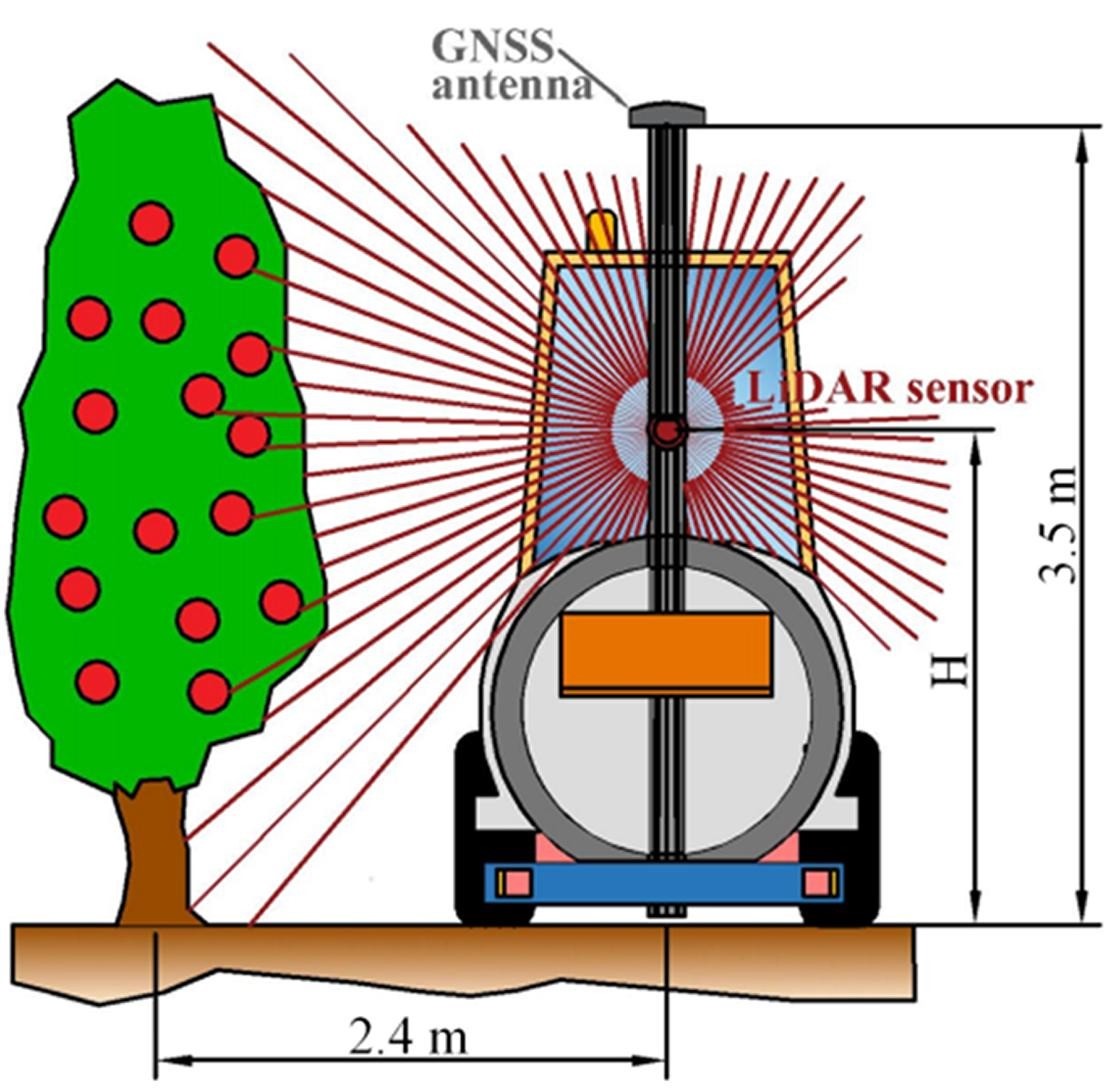Scientific article published: "Fruit detection, yield prediction and canopy geometric characterization using LiDAR with forced air flow"
Download PdfJordi Gené-Mola et al. have published a new article in Computers and Electronics in Agriculture. The research is related to the PAgFRUIT Project. The main highlights are: a) A system for simultaneous fruit location and canopy characterization is presented, b) The use of forced air flow helped to reduce the number of fruit occlusions, c) Results show a fruit location success of more than 80% of the annotated fruits, d) The system was able to predict the yield with an RMSE lower than 6%.
Authors: Gené-Mola, J.; Gregorio, E., Auat, F.; Guevara, J.; Llorens, J.; Sanz-Cortiella, R.; Escolà, A.; Rosell-Polo, J.R., 2020. Fruit detection, yield prediction and canopy geometric characterization using LiDAR with forced air flow. Computers and Electronics in Agriculture 168, 105121. https://doi.org/10.1016/j.compag.2019.105121
Abstract: Yield monitoring and geometric characterization of crops provide information about orchard variability and vigor, enabling the farmer to make faster and better decisions in tasks such as irrigation, fertilization, pruning, among others. When using LiDAR technology for fruit detection, fruit occlusions are likely to occur leading to an underestimation of the yield. This work is focused on reducing the fruit occlusions for LiDAR-based approaches, tackling the problem from two different approaches: applying forced air flow by means of an air-assisted sprayer, and using multi-view sensing. These approaches are evaluated in fruit detection, yield prediction and geometric crop characterization. Experimental tests were carried out in a commercial Fuji apple (Malus domestica Borkh. cv. Fuji) orchard. The system was able to detect and localize more than 80% of the visible fruits, predict the yield with a root mean square error lower than 6% and characterize canopy height, width, cross-section area and leaf area. The forced air flow and multi-view approaches helped to reduce the number of fruit occlusions, locating 6.7% and 6.5% more fruits, respectively. Therefore, the proposed system can potentially monitor the yield and characterize the geometry in apple trees. Additionally, combining trials with and without forced air flow and multi-view sensing presented significant advantages for fruit detection as they helped to reduce the number of fruit occlusions.
